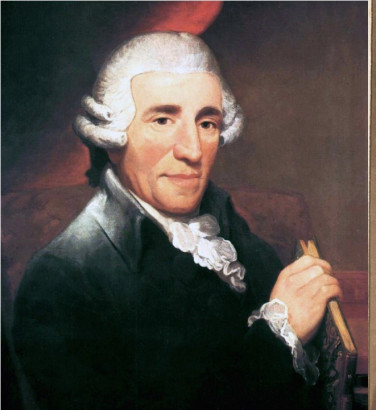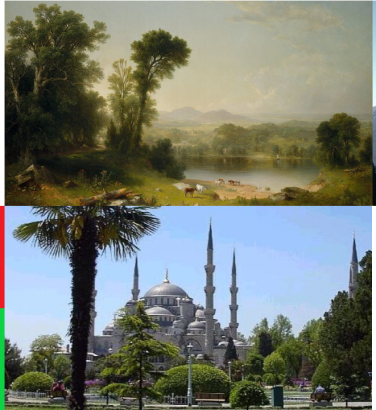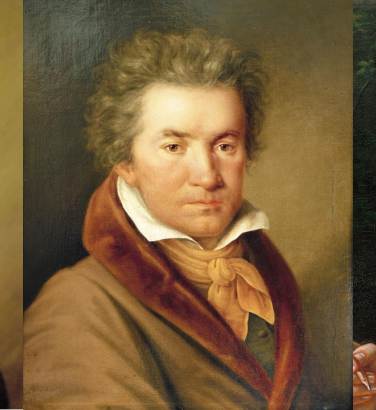
The violin concerto
16 Dec 2024
News Story
How many of our First Violinists can you name? (Photo credit: Christopher Bowen)
This article is part of a series focusing on the concerto as written for specific instruments in the orchestra. With contributions from SCO players, we hope these give you some new insight into works you know and an idea of others they would recommend seeking out.
The history of the violin concerto goes back to the very earliest days of the concerto for solo instrument and orchestra in Italy, during the Baroque era: Torelli’s violin concertos, dated 1698, are in fact the first known solo concertos for any instrument. Most orchestras being directed from the violin at the time, it will have been a natural step for the leader to step out from the rest of the ensemble for a virtuoso display of their skills.
This set-up remained the norm through the Classical period into the early 19th century, by which time the solo part had become so demanding that it made more sense for there to be a separate conductor. While the piano commanded greater attention in this age of the virtuoso, the violin perhaps benefitted from a wider reach, helped by the instrument’s popularity beyond the classical sphere. ‘Gypsy’ stylings in particular enriched the repertoire well into the 20th century, when the violin also found a perhaps unlikely niche in jazz (in great part thanks to Stephane Grappelli).
Of all the instruments we are covering in this series, the violin therefore has by far the largest amount of solo concertos to its name, and its popularity has never really waned. This leaves the SCO violinists – (deep breath) Leader Stephanie Gonley, Principal First Violin Afonso Fesch, First Violins Kana Kawashima, Aisling O’Dea, Fiona Alexander and Amira Bedrush-McDonald, Principal Second Violin Marcus Barcham Stevens, Sub-Principal Second Violin Gordon Bragg and Second Violins Michelle Dierx, Niamh Lyons and Rachel Smith – with a bewildering array to choose from when put on the spot about their favourites. A true overview of the genre would be ridiculously long, but we hope to provide a guide to the greats and several pointers for others which may be overlooked for one reason or another. (Please note that some of contributions to this article have been made anonymous, at the players’ request.)
The first flourishing of the genre took place in Italy during the early 18th century, specifically in Venice, a city whose cultural life continued to thrive despite its significance as an international trading post being arguably on the wane. Churches and opera houses formed the backbone of the musical scene, and Venice’s orphanages came to play a vital role in training young musicians, effectively becoming music conservatoires. Vivaldi worked on and off at one of these, the Ospedale della Pietà, over a period of nearly four decades (chiefly as a violin teacher), and wrote many of his works for performance at the orphanage. About 230 of his 350 concertos are for violin, a clear indication of the instrument’s importance at the time. Some of our violinists actually recommend seeking out the lesser-known ones: “start with the other concertos in Il cimento dell’armonia e dell’inventione [the set from which The Four Seasons come] and take it from there,” is one tip which came our way. Another violinist, possibly with the festive season in mind, has a soft spot for the Violin Concerto in E major, RV 270, nicknamed ‘Il riposo’ (Rest) and indicated as being “per il Santissimo Natale” (for Christmas).

Marchus Barcham Stevens
Credit: Christopher BowenIt would be remiss, at this point, not to mention the Italian craftsmen of the period – mostly resident in Cremona – whose creations are held up to this day as being among the very finest string instruments ever made. Antonio Stravidari is of course the closest of these to being a household name, overshadowing not just his own relatives but also the entire Amati, Rugeri and Guarneri families.
Going back to Vivaldi, the publication of his music in the early 1700s ensured his fame far beyond Venice: some 500 miles to the north, for instance, it came to have a profound influence on JS Bach, whose two violin concertos (both nominated as true greats by Marcus) owe a debt to the Italian master. This established a German school of violin playing, which would culminate in the publication of Mozart’s seminal Treatise on the Fundamental Principles of Violin Playing – not by Wolfgang Amadeus but his father Leopold, whose textbook was so successful that it was translated into French and Dutch, as well as going through multiple German editions.
As an adult, the younger Mozart may have been seduced by the potential of newer instruments like the piano and clarinet, but he was very much a violinist as a younger man. Aisling has a soft spot for the “operatic beauty” of the violin concertos he wrote as a young man, particularly the slow movements of Nos 3 and 5. Haydn – better remembered for his symphonies and string quartets – is another composer whose violin concertos are often overlooked, and Marcus isn’t alone among our violinists in wishing this weren’t the case.
While Beethoven did of course compose a violin concerto (the first of many to write a single one and leave it at that), his more significant contribution to the violinist’s repertoire is arguably as the composer of ten sonatas, among which the Kreutzer remains the best-known. This piece being named after a violinist – Rodolphe Kreutzer, to whom the work is dedicated – gives an early indication of the rise of what might be termed superstar musicians in the 19th century.

Aisling O'Dea
Credit: Christopher BowenThese would be led by two figures, whose skills were so astounding that reports of fainting ladies abounded at their performances. One of these was the pianist (and composer) Franz Liszt, whom we’ll leave for another time; the other was the flamboyant violinist Niccolò Paganini, whose technique so dazzling that it was claimed he must have sold his soul to the Devil for it. Paganini did nothing to discourage these rumours: besides contributing to the violin’s long-standing history as the Devil’s instrument of choice, they undoubtedly added to his own notoriety. Unfortunately his own concertos are a triumph of style over substance: his best-known work remains the last of his 24 Caprices for solo violin, the basis of variations by everyone from Brahms to Lloyd Webber (yes, that one).
Joseph Joachim and Pablo de Sarasate, the two violinists to whom the bulk of the great 19th century violin concertos are dedicated, may not have had Paginini’s extraordinary technical abilities, but there is no doubt that the concertos written for them contain much greater music. Joachim’s preferred repertoire was of the Germanic school, hence his comment about the four great German violin concertos – Beethoven’s and those by Mendelssohn, Bruch and Brahms – still holding sway to this day. (For more on his close relationship with these works, click here.)
Sarasate’s Spanish heritage was eagerly embraced by a host of composers (many of them French), whose violin music seems to have fallen slightly out of favour today despite there being several crowd-pleasers among them. Saint-Saëns’ Introduction and Allegro capriccioso still gets an occasional airing (unlike his three violin concertos), but Lalo’s Symphonie espagnole and Bruch’s Scottish Fantasy are performed surprisingly little – and Wieniawski’s Violin Concerto No 2, to the chagrin of one of our players, is “increasingly known only to violinists”.
The instrument did, however, benefit considerably from this greater exposure in France, though the school of playing that came about as a result is more correctly termed Franco-Belgian. The influence of its teachings would be felt well into last century, when violinists continued to trace their musical heritage (via their teachers) to Vieuxtemps and Ysaÿe, key figures of this school. One of their most important teachings was the importance of a beautiful tone over and above mere virtuosity: as Vieuxtemps is reported to have said, “not runs for the sake of runs – sing, sing!” As for Ysaÿe, his works for solo violin – one of which you many recall Aylen Pritchin having played as an encore in our Prokofiev & Brahms concerts in December 2024 – are on a par with Bach’s: “if Bach’s Sonatas and Partitas are the Old Testament, Ysaÿe’s are the New Testament” is a common adage among violinists.

Kana Kawashima
Credit: Christopher BowenAs interest in music from further afield started to grow, so violin concertos started to appear in other countries. Interestingly, Tchaikovsky’s – believed to the first by any Russian composer - is mentioned by one of our violinists, but not for its solo part: Marcus highlights “a really fast and tricky semiquaver passage for the [orchestral] violins which suddenly comes out of nowhere in the last movement”, only audiences are so focussed on the soloist that it generally passes by unnoticed. For his sake, be sure to listen out for it at our Tchaikovsky Violin Concerto concerts (6-7 March)!
If one early response to Tchaikovsky’s concerto – it made the critic Eduard Hanslick aware that “music can exist which stinks to the ear” – seems especially misguided, Brahms’ (written in the same year of 1878) didn’t go even down well with violinists! Sarasate objected so violently to the oboe getting “the only tune in the Adagio” that he refused to play the work altogether, while Wieniawski deemed it “unplayable”, perhaps reflecting the view (attributed to various sources) that this was not so much music written for violin as against it.
Aisling is not the only person (violinist or otherwise) for whom these criticisms are unthinkable. She recalls having played Nathan Milstein’s recording of the Brahms concerto repeatedly while studying for her A-levels: “such an exciting inspiration for me as a young musician – one I will never forget as his playing was so fluid, free and colourful.” It remains a true standout for her.
A Romantic sheen can still be heard in some violin concertos written in the 20th century: those by Glazunov, Sibelius (played by Geneva Lewis with the Orchestra in January) and Elgar all date from its first decade, while Korngold and Rózsa – both better known for their film scores – wrote theirs after World War Two. (If the latter sounds vaguely familiar to cinephiles, it’s likely because Rózsa recycled it into his soundtrack for Billy Wilder’s 1970 film The Private Life of Sherlock Holmes.)
Rachel takes a particular interest in the Australian violinist Alma Moodie, a largely unfamiliar name today, but of untold significance in the early 20th century. One of the foremost of female violinists between the wars, it is to her that we owe a number of important violin concertos of the period, such as those by Pfitzner and Krenek - both of which have all but dropped out of the repertoire since. Unfortunately she did not make a single recording during her career (part of the reason so little is known of her today), as a result of which we can only go by written reports of her playing: she was particularly admired for her Brahms sonatas, and counted Stravinsky among her admirers. (We can confirm the truth in Rachel's warning that, in researching Moodie, "you risk falling down quite a rabbit-hole", so be warned!)
Many of our violinists name concertos from the first half of the 20th century as their favourites, one of them emphasising that they’re “not nearly as challenging a listen as you might think”. This player cites the pair by Bartók - written at opposite ends of his composing career – as unexpectedly lyrical, an apt description also of Prokofiev’s First and those by Barber and Walton. In Scotland, Szymanowski’s Violin Concerto No 1 found a powerful advocate in Nicola Benedetti, whose performance of it in 2004 won her the title of BBC Young Musician of the Year. Another SCO violinist recommends “putting prejudice aside and really giving Berg’s concerto a go[:] it is surprisingly tender.” Khachaturian's is also recommended by one of our players, and moving slightly away from the pure concerto, others point to Vaughan Williams’ “ethereal” The Lark Ascending, while Ravel’s Tzigane is deemed by one as “hair-raising for the violinist, but enormous fun!” (We should also add some of Kreisler’s violin showpieces here, works he passed off for many years as being by other composers before finally admitting they were his own.)
The 20th century’s more challenging violin concertos would come later, many of them from Soviet Russia. Shostakovich – another composer with a pair to his name – suppressed the premiere of his first until two years after the death of Stalin, as a work too personal in nature to fit within the strictures of was accepted by the state. The second “sounds easier on the ear,” in the words of one of our violinists, “but is a technical challenge to play.” Schnittke is a rare composer to have contributed several concertos to the violinist's repertoire – four all told, written between 1957 and 1984, No 3 being the favourite of one SCO violinist, partly down to its unusual accompaniment, for an ensemble of 13 wind instruments and only four strings.
More recently, there have been notable additions to the repertoire by American composers: Philip Glass, John Adams and Michael Nyman at the minimalist end of the scale, while André Previn and Danny Elfman have continued in the footsteps of the grand Hollywood tradition - and there is still no let-up in the number of concertos written for the instrument. If we return to Nicola Benedetti, she has in the last five years alone premiered works by Wynton Marsalis, Mark Simpson and (with the SCO, at the beginning of our 2023/24 Season) Sir James MacMillan.
With so many concertos to choose from, you will appreciate that just this once, we have no honourable mentions to recommend: as several of our players have remarked, there really is a violin concerto to suit all tastes!

Tchaikovsky Violin Concerto
Outstanding Finnish violinist Pekka Kuusisto directs and plays one of the best-loved masterpieces in the Romantic violin repertoire.
Related Stories
![]()
Haydn, Father of the Symphony
22 September 2025
In the latest in our series looking at the symphony, what makes Haydn so significant in its development?![]()
Symphonies and their nicknames
8 September 2025
Beethoven's Fifth has a nickname? Well, it does according to some people ...![]()
Beethoven's 'lesser' symphonies
26 May 2025
Why are some Beethoven symphonies better-known than others?


